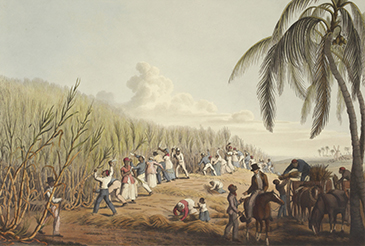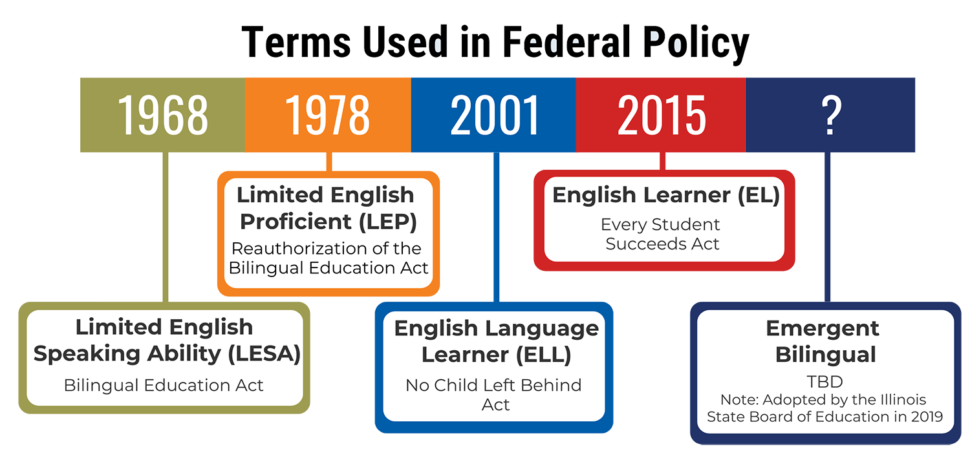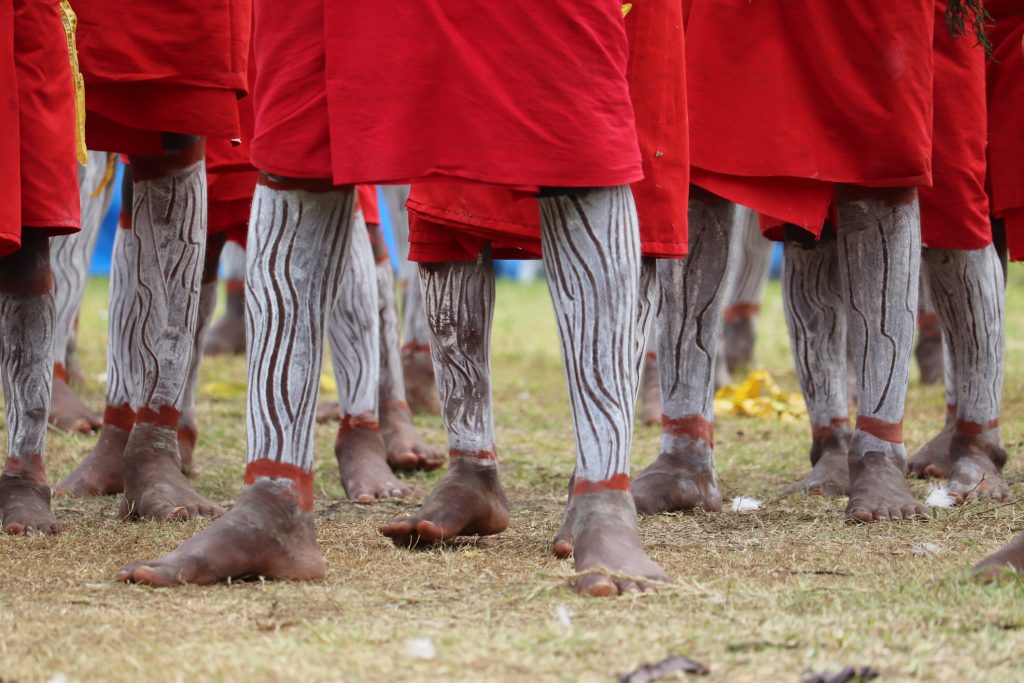

Juneteenth is a combination of “June” and “nineteenth” in honor of the date Union Army’s Major General Gordon Granger arrival in Galveston, Texas to announce the end of the Civil War & the official end of slavery through the ratification of the Emancipation Proclamation which occurred on Jan 1, 1863 (de Haan, 2020). This announcement on June 19, 1865 occurred 901 days or 2.5 years after the proclamation’s ratification. In other words, 3.5 million freed people were illegally enslaved for an additional 2.5 years.
Coincidentally, June is also Immigrant Heritage Month. It is a time for Americans who are immigrants or the descendants of immigrants to reflect on and celebrate their cultural heritages (White, 2020). It is imperative to understand that although Juneteenth is the celebration of the end of slavery for African Americans, one must understand that 23,893 or 4.2% of K-12 ELs (English Learners) identified as racially Black (Cooper, A., & Bryan, K., 2021). The number of Black immigrants is growing in the U.S. and they too face much of the same bias, racism, and prejudice as African Americans. Due to the unaddressed legacy of slavery in the U.S., Black migrants face challenges that non-Black immigrants do not (White, 2020).
Juneteenth is not only a celebration of freedom, but also a time to further the conversation of addressing the still lingering legacy of slavery in the U.S. But this freedom was not instant magic. When Texas fell and Granger dispatched his now famous General Order No. 3, which announced the end of slavery, it was not exactly “instant magic” for most of the Lone Star State’s 250,000 slaves. On plantations, slave owners had to decide when and how to announce the news or wait for a government agent to arrive to force them to free their slaves and some slave owners delayed the announcement until after the harvest. Even in Galveston City, the ex-Confederate mayor flouted the Army by forcing freed people back to work, as historian Elizabeth Hayes Turner details in her comprehensive essay, “Juneteenth: Emancipation and Memory,” in Lone Star Pasts: Memory and History in Texas (Conradt, 2018).
Freedom was not guaranteed
Many who acted on the news of freedom did so at their own peril because despite the announcement, Texas slave owners weren’t too eager to part with what they felt was their property. We should remember that slavery was not just the practice of making someone do something against their will, but it was a belief that Black people were someone’s property to do with as they please. The newly emancipated people who tried to escape were often murdered, beaten, or lynched (de Haan, 2020).
The unequal access to key information and resources, as epitomized by Juneteenth, continues the historic legacy of African Americans having unequal access to the same resources and information as white Americans have had. This “theme” of Black Americans having unequal access, being the last to know, the last to benefit, and the last to experience all the benefits of freedom and equality guaranteed to them through the 13th Amendment and the Civil Rights Act, to name just a couple of laws, is a continuous thread that can presently be seen throughout the American educational system. Black American students have on average unequal access to key information and resources offered by the American education system.
Education for African Americans after the end of slavery
The Reconstruction era: The Reconstruction era was the period after the American Civil War from 1865 to 1877. During this time, the U.S. dealt with reintegrating the states that seceded back into the union and determining the legal status of African Americans (African Americans and Education During Reconstruction: The Tolson’s Chapel Schools (U.S. National Park Service) 2021)
African Americans in the former slave-holding states immediately saw education as an important step towards achieving equality, independence, and prosperity. As such, they found ways to learn despite the many obstacles poverty and white Americans placed in their path. The African American community’s commitment to education had a lasting impact in the former slave-holding states. As voters and legislators in the 1800s, African Americans played crucial roles creating public schools for them and white Americans in the southern and border states (African Americans and Education During Reconstruction: The Tolson’s Chapel Schools U.S. National Park Service, 2021)
According to the Smithsonian National Museum of American History, before the 1860s, and the freedom of African Americans, most of the South only had a rudimentary public school system. After the Civil War, southern states ultimately created an educational system based on race with “colored schools” and “white-only schools.” These separate schools were anything but equal. In some southern states, “white-only schools” received two to three times more money per student than “colored schools”. African American taxpayers in several states not only bore the entire cost of their own schools but helped support “white-only schools” as well (The Quest for Education – Separate Is Not Equal, ND).
Yet, the commitment of African American teachers and parents to education never faltered. The lyrics by African Americans established a tradition of educational self-help. They were among the first southerners to campaign for universal public education. They welcomed the support of the Freedmen’s Bureau, white charities, and missionary societies. Additionally, Black communities, despite being desperately poor, dug deep into their own resources to build, uphold, and maintain schools that met their needs and reflected their values. Even with that, the threat of attacks from white Americans was still present (Smithsonian National Museum of American History, ND).
We went every day about nine o’clock, with our books wrapped in paper to prevent the police or white persons from seeing them…After school we left the same way we entered, one by one, when we would go to the square about a block from school and wait for each other.”
—Susie King (1848-1912) attended a secret school in Savannah, Georgia.
The Jim Crow South
The term Jim Crow traces back to a derogatory minstrel routine from the 1830s. The term “Jim Crow” typically refers to repressive laws and customs once used to restrict African Americans’ rights, but the origin of the name itself actually dates back to before the Civil War (Andrews, 2014).
Education is the key to economic success, but for African Americans and Black immigrants obtaining an education was and still can be an arduous and often dangerous task where not everyone is successful, but it is not impossible as can be heard in the lyrics by Truthcity in the song Persistence, “I know success ain’t common, I know the hood economics / I know some won’t make it out, tear when I think about it / But I know God and logic / Grind and let the spirits guide us / Passion, will and thirst for knowledge got me through the pain and trauma.”
Southern education was not very good even for white children. But education for African Americans in the South in the early 1900s was worse (Adedapo & Kaplan, 2020). Americans have long believed that a healthy democracy depends in part on free public education. The nation’s founders stressed that an educated citizenry would better understand their rights and help build a
prosperous nation. Beginning in the early 1800s, the federal government and the states encouraged a largely locally controlled public school system. The American public-school movement opened new opportunities for millions of children, but millions of racial and ethnic minorities were excluded from an equally well-resourced public education. These groups were relegated to a segregated education system designed to confine these children to a subservient role in society and second-class citizenship (The Educated Citizen – Separate Is Not Equal, ND).
Bias in Education:
Americans often forget that as late as the 1960s most African American, Latino, and Native American students were educated in wholly segregated schools funded at rates many times lower than those serving white Americans and were excluded entirely from many higher education institutions (Darling-Hammond, 2016).
In the current American education system, the historical thread of African Americans having unequal access to key information and resources continues and the COVID-19 pandemic further brought this to the forefront. School lockdowns have helped reveal the many layers of inequities in education that have long existed yet have been hidden in plain sight or simply ignored. For many this has brought to light the painful reality that there is truly no equity in education for African Americans and Black immigrants, especially those that live in low-income urban communities.
Research shows that implicit racial bias leads teachers to set lower expectations for all Black students, African Americans and Black immigrants. The same is true for bias against students who are not native English speakers. Black immigrant students who don’t speak English well face a double bind of lowered expectations (White, 2020). This inequity in the American education system is also seen in majority racial and ethnic minority communities. As co-author, Dr. de Haan stated in her December 19, 2020 article for NJ Spotlight, “NJ schools need a plan to rescue students from COVID-19 chasm.” A “covid slide” is occurring, and children who live in poverty, mainly African American and other other racial and ethnic minorities, will be much more adversely affected and the learning losses will be greatest at the elementary school level, particularly in reading and math, with kindergartners experiencing the most harm. There is extensive literature that indicates students from historically oppressed groups will experience much greater learning loss and higher dropout rates (de Haan, 2020). According to the 2017-2018 results from the National Center for Educational Statistics, the national adjusted cohort graduation rate (ACGR) for public high school shows that African American and Latino American students, regardless of race, had graduation rates of only 79% and 81% respectively, as compared to 89% for white students and 92% for Asian/Pacific Islander American students. But is the “learning loss” really just due to the pandemic? From the history of education of African Americans in the U.S., as outlined in this article, the answer emphatically points to NO.
The learning loss has been a systemic process that still relegates African American students to the back of the bus. Only now the bus has become education. Let us take a closer look at two layers of inequity that COVID-19 revealed, ‘The Swallowing of a Generation’, and ‘The Digital Divide’.
Layer 1: The Swallowing of a Generation:
- One result of the COVID-19 pandemic is widespread concern that the achievement gap has grown into a coronavirus chasm that threatens to “swallow” an entire generation of African American, and many other children, regardless of race or ethnicity, from low-income families as well as English-language learners and special-education students. These children have been left to teach themselves unsupervised on Zoom in kitchens, bedrooms and on sofas. Many schools serving low-income students have lowered learning expectations for remote instruction because families may not have reliable technology to stream video (de Haan, 2020). The May 7, 2021 Language Magazine article entitled, Summer Learning to Help Students Most Impacted by the Pandemic, states that the Department of Education has launched a Summer Learning & Enrichment Collaborative to help states use federal funding to support students most affected by the COVID-19 lockdowns in order to address the potential learning loss due to the pandemic.
The technological divide, or digital divide, has created another point of unequal access to key information and resources adversely affecting equity in the American education system.
Layer 2: The Digital Divide:The digital divide refers to the growing gap between the under resourced members of society, especially the low-income and rural portion of the population who do not have access to computers and/or the internet, and the wealthy and the middle-class members of society living in urban and suburban areas who have access (Dotterer et al., 2016).
- The pandemic did not create the digital divide, it exposed the digital divide. There has always existed a well-known achievement gap between the socioeconomic classes in education, and technology should be a means of closing that gap. Unfortunately, rural and low-income urban schools also face a digital divide, which magnifies the achievement gap. In poorer areas and more rural areas, the internet is not as reliable or as easily available for students. According to a 2013 Pew Research study, only 54% of middle and high school teachers surveyed thought their students have sufficient access to digital tools at school, and 84% said that digital technologies are leading to greater disparities between affluent and disadvantaged schools and school districts (Purcell et al., 2020).
For Americans of all backgrounds, Black immigrants included, the unequal allocation of opportunity in a society that is becoming ever more dependent on knowledge and education is a source of great anxiety and concern. Educational outcomes for African American and other racial and ethnic minority children are much more a function of their unequal access to key educational resources, including skilled teachers and quality curriculum, than they are a function of race or ethnicity.
In fact, the U.S. educational system is one of the most unequal in the industrialized world, and students routinely receive dramatically different learning opportunities based on their social status. In contrast to European and Asian nations that fund schools centrally and equally, the wealthiest 10% of U.S. school districts spend nearly 10 times more than the poorest 10%, and spending ratios of 3 to 1 are common within states. Despite stark differences in funding, resources, teacher quality, school curriculum, and class sizes, the prevailing view in the U.S. is that if students do not achieve, it is their own fault. If the U.S. is ever to move beyond the vast racial and ethnic inequalities, we as concerned citizens, must confront and address these inequalities in the American education system (Darling-Hammond, 2016).
The African American community throughout history, from slavery to present day, has been subjected to atrocities on all levels solely based on skin color. We need to honor Juneteenth as a time to further the conversation addressing the societal legacy of slavery in the U.S. and, as this article outlines, the educational inequalities brought about by this legacy. COVID-19 did not bring about the deficiencies in educational resources for African American or other racial or ethnic minority students, it was always present. But what it did was expose those layers of inequities, and the educational system’s biases, whether blind or implicit. How do we now break this continuous thread or “theme” of African American students having a lack of information, being the last to know, the last to benefit, and the last to experience all the benefits of freedom, equality and equity guaranteed to them through the 13th Amendment, the Civil Rights Act, and Brown vs. Board of Education?
The aim of this article is to be a humble contribution to the conversation and the history of educational inequality in the U.S. and to hopefully aid in conversations about achieving a desperately needed equitable educational system.
References
Adedapo , A., & Kaplan, F. (2020, August 21). The Education of Black Children in the Jim Crow South. America’s Black Holocaust Museum. https://www.abhmuseum.org/education-for-blacks-in-the-jim-crow-south/.
Andrews, E. (2014, January 29). Was Jim Crow a Real Person? History.com. https://www.history.com/news/was-jim-crow-a-real-person.
Cooper, A., & Bryan, K. (2021, May 13). Awareness to Advocacy: Black ESL Students in the United States. Presented at Kennesaw State University 19th Annual ESOL Conference, Kennesaw, GA.
de Haan, B. R. (2020, June). Juneteenth 19 June aka Emancipation Day. Racial Justice Series. Presented at DASACC for Cultural Awareness, Warren County, NJ de Haan, D. (2020, December 31). Op-Ed: NJ schools need a plan to rescue students from COVID-19 chasm. NJSpotlight News. NJSpotlight . https://www.njspotlight.com/2020/12/covid-19-chasm-unlearning-learning-loss-historically-oppressed-students/.
Dotterer, G., Hedges, A., & Parker, H. (2016, January 14). The Digital Divide in the Age of the Connected Classroom How Technology Helps Bridge the Achievement Gap. Net-ref.com. https://www.net-ref.com/wp-content/uploads/2016/01/Bridging-the-Digital-Divide-NetRef-White-Paper-FINAL.pdf.
Darling-Hammond, L. (2016, July 28). Unequal Opportunity: Race and Education. Brookings. https://www.brookings.edu/articles/unequal-opportunity-race-and-education/.
Purcell, K., Buchanan, J., & Friedrich, L. (2020, May 30). How Teachers Are Using Technology at Home and in Their Classrooms. Pew Research Center: Internet, Science & Tech. https://www.pewresearch.org/internet/2013/02/28/how-teachers-are-using-technology-at-home-and-in-their-classrooms/.
The Smithsonian Natural Museum History of American History. (n.d.). The Quest for Education – Separate Is Not Equal. https://americanhistory.si.edu/brown/history/2-battleground/quest-for-education-1.html.
The Smithsonian National Museum of American History. (n.d.). The Educated Citizen – Separate Is Not Equal. https://americanhistory.si.edu/brown/history/2-battleground/educated-citizen.html.
U.S. Department of the Interior. (2021, May 5). African Americans and Education During Reconstruction: The Tolson’s Chapel Schools (U.S. National Park Service). National Parks Service. https://www.nps.gov/articles/african-americans-and-education-during-reconstruction-the-tolson-s-chapel-schools.htm#:~:text=African%20Americans%20had%20other%20reasons,for%20participating%20in%20civic%20life.
White, S. (2020, November 2). What Does it Mean to Be a Black Immigrant in the United States? > The Immigrant Learning Center. The Immigrant Learning Center. https://www.ilctr.org/what-does-it-mean-to-be-black-immigrant-united-states/.
Notes
1 The Freedmen’s Bureau was established in 1865 to aid formerly enslaved African Americans. Its limited resources never met the tremendous demand for education from African Americans across the South.
2 Papiamentu, also spelled Papiamento, creole language based on Portuguese but heavily influenced by Spanish. In the early 21st century, it was spoken by about 250,000 people, primarily on the Caribbean islands of Curaçao, Aruba, and Bonaire. It is an official language of Curaçao and Aruba.
Bremen de Haan, M.A, MBA is a former International Rotary Academic Peace Fellow and a returned Peace Corps Panama Volunteer with an extensive background in social sector program development, implementation, and consulting. Mr. de Haan earned his MBA from The Rotterdam School of Business: Erasmus University, holds a M.A. in Peace and Conflict Resolution and International Diplomacy from the University of Queensland, St. Lucia, Australia and a B.A. in International Economics and Development from the University of North Carolina at Chapel Hill. Mr. de Haan is fluent in English, Spanish, Dutch, Papiamentu2 and Level 1 Mandarin Chinese.
Darlyne de Haan, Ed.D is an educator, educational consultant, a former forensic scientist and chemist with more than 20 years of experience in STEM, and a Blogger for TESOL International. Dr. de Haan is a recipient and participant of the coveted Fulbright Administrator Program for Fulbright Leaders for Global Schools, a program sponsored by the U.S. Department of State’s Bureau of Educational and Cultural Affairs. Dr. de Haan is a strong advocate for changing the face of STEM to reflect the population. Dr. de Haan is fluent in English and proficient in Spanish and Papiamentu.












